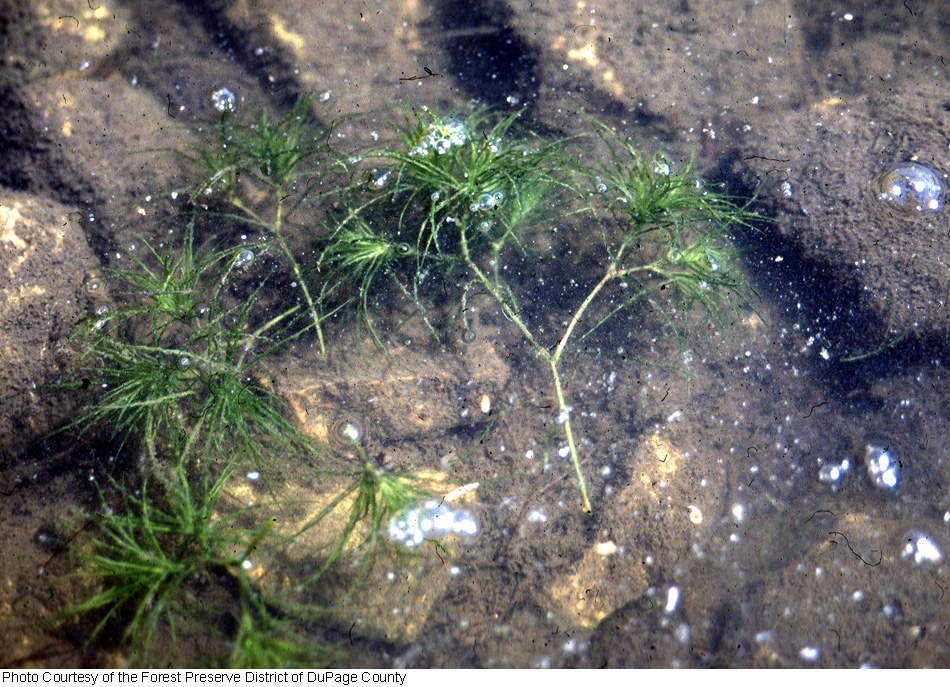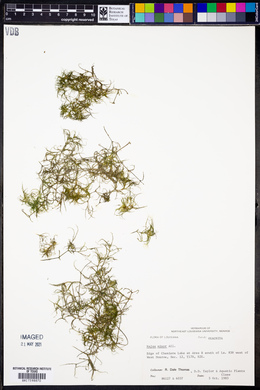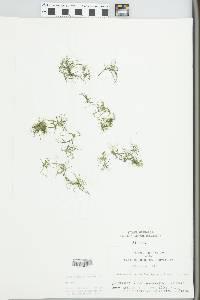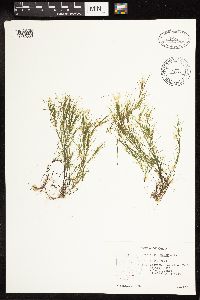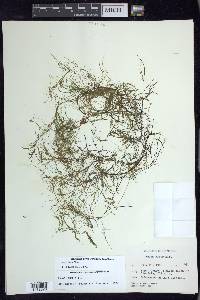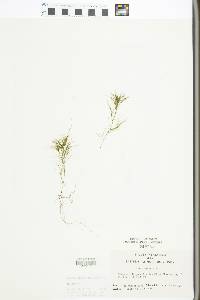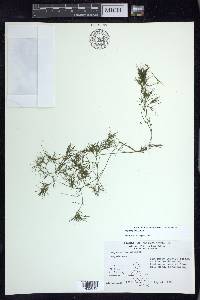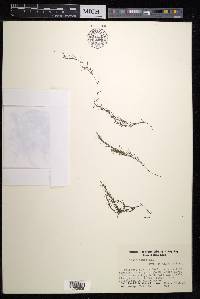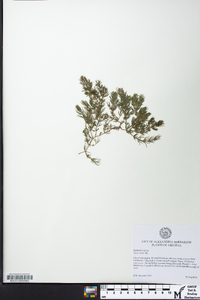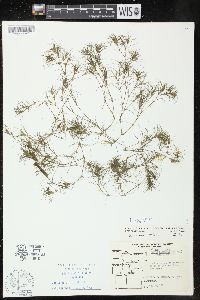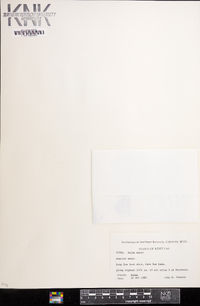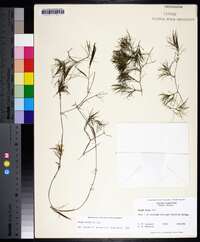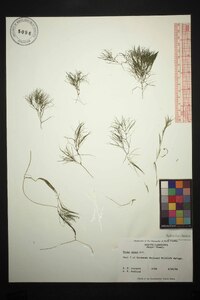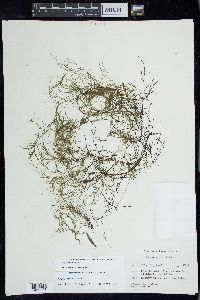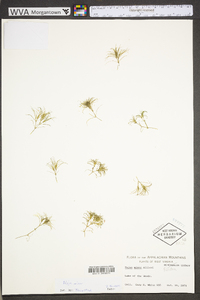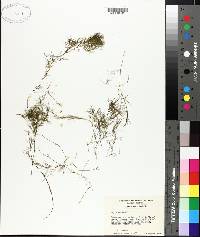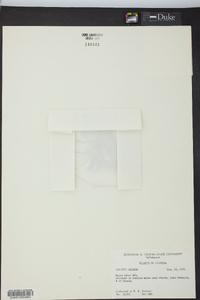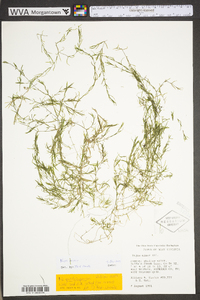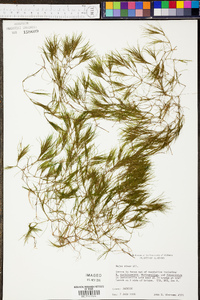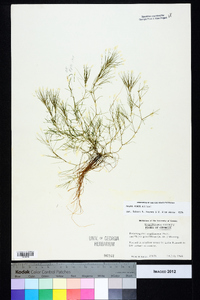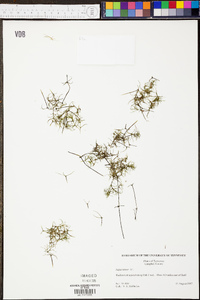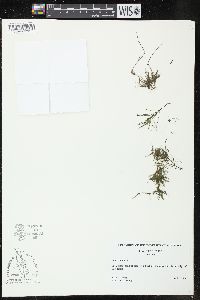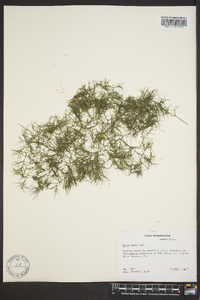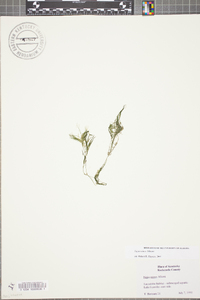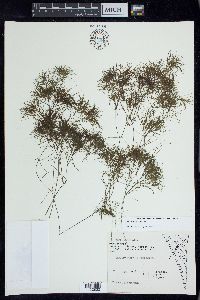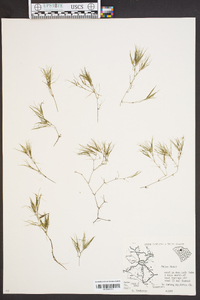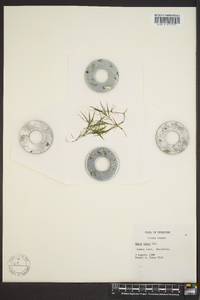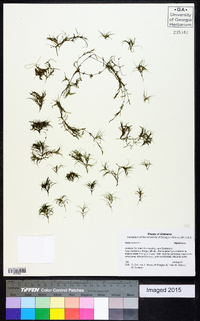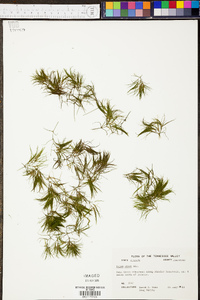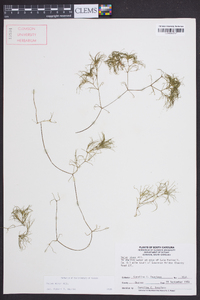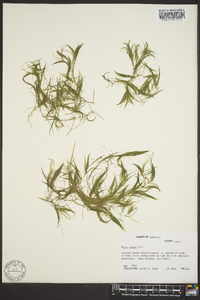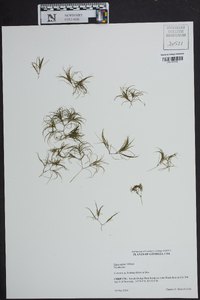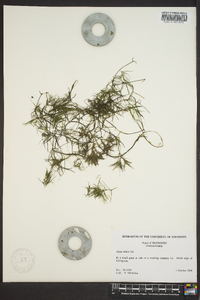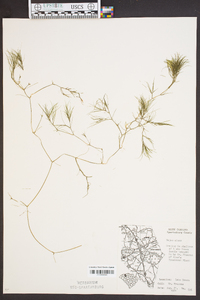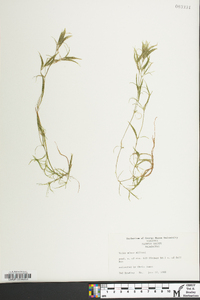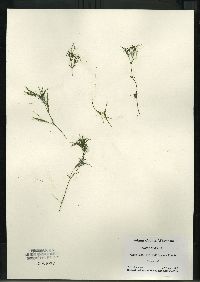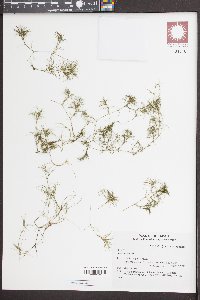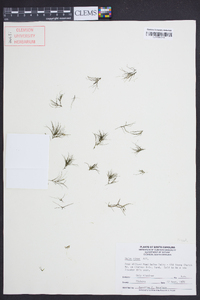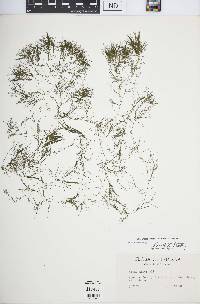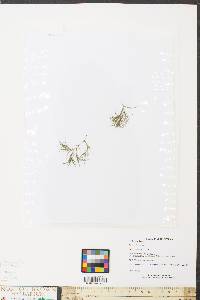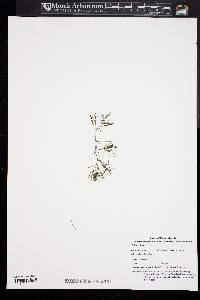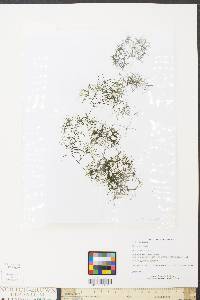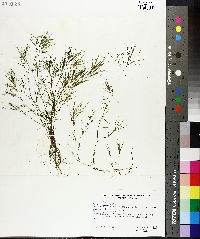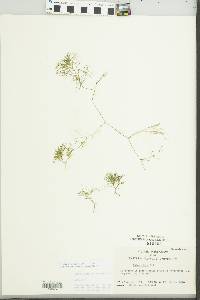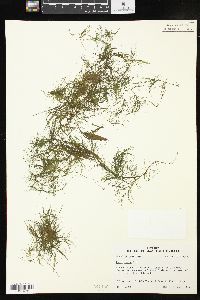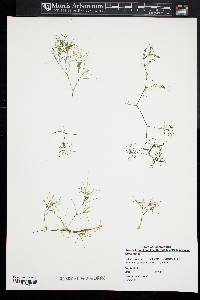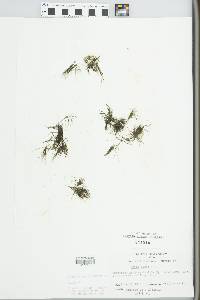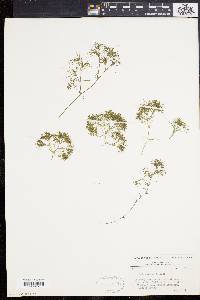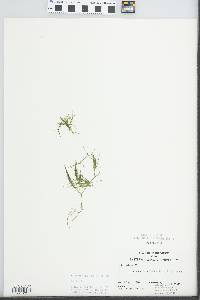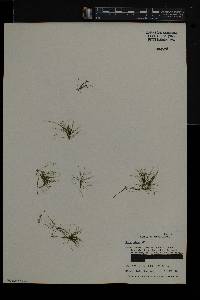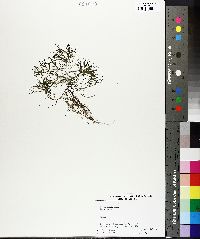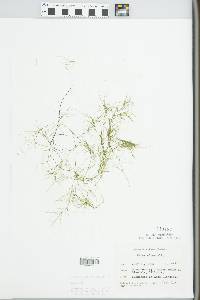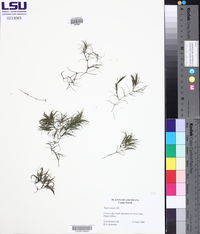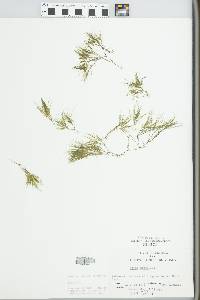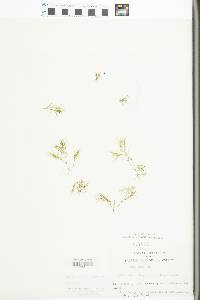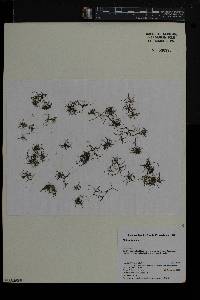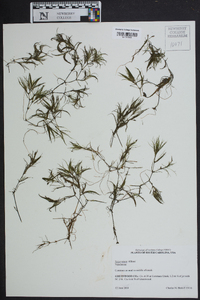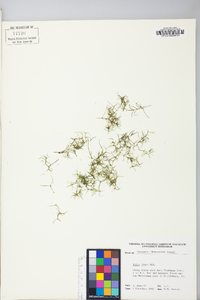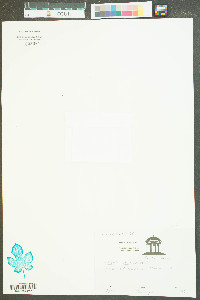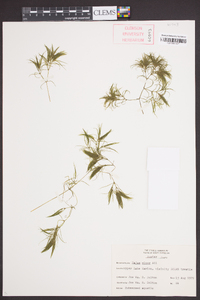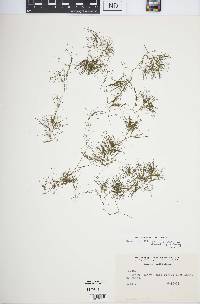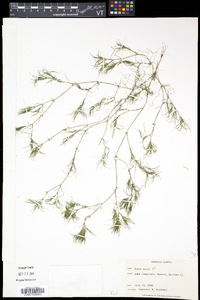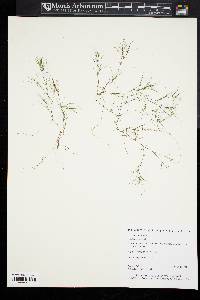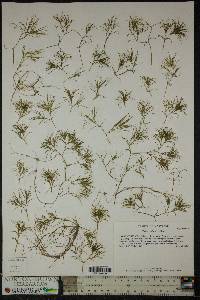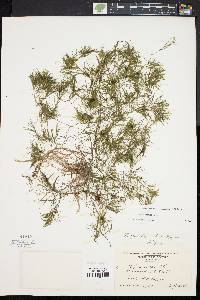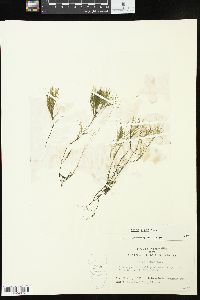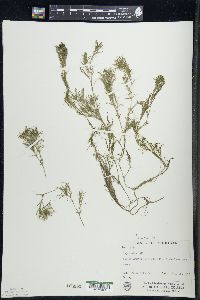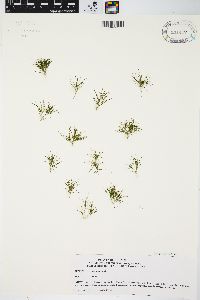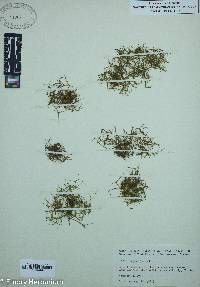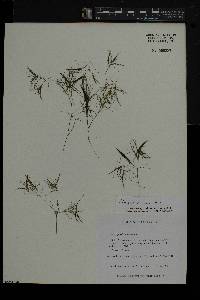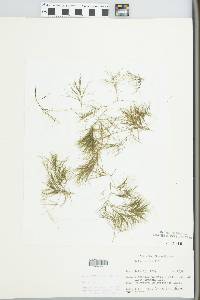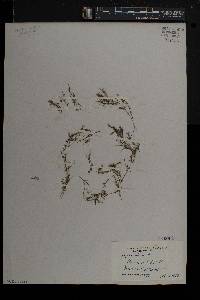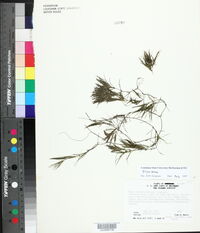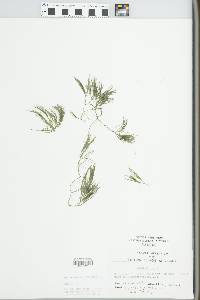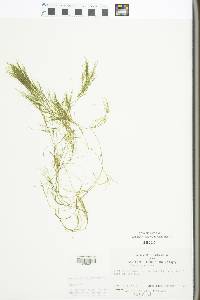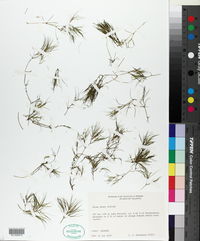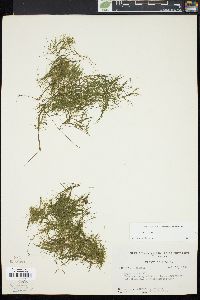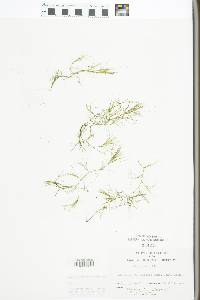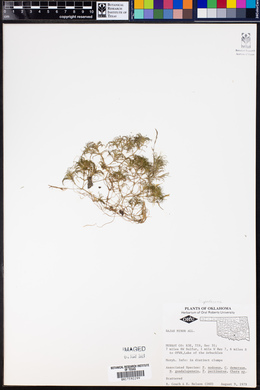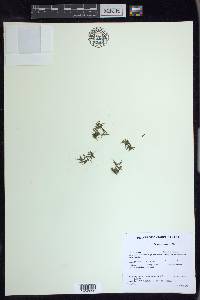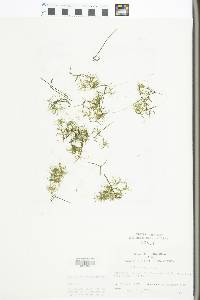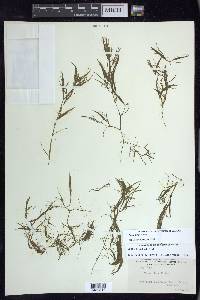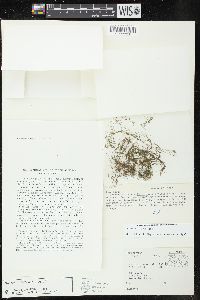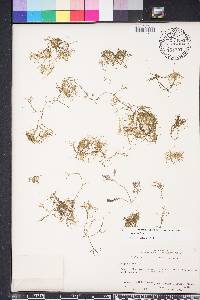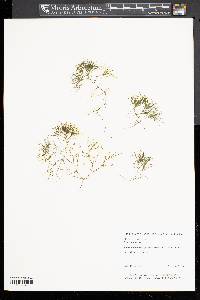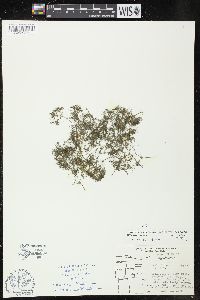
|
|
|
|
Family: Hydrocharitaceae
Brittle Waternymph
[Najas fragilis (Willd.) Delile] |
Stems profusely branched near apex distally, 11--120 cm ´ 0.2--1 mm; internodes 0.5--5.8 cm, without prickles abaxially. Leaves usually recurved with age, 0.5--3.4 cm, stiff in age; sheath 1--3 mm wide, apex truncate to auriculate; blade 0.1--1.2 mm wide, margins conspicuously serrulate, teeth 7--15 per side, apex acute, with 1--2 teeth, teeth multicellular; midvein without prickles abaxially. Flowers 1--2 per axil, staminate and pistillate on same plant. Staminate flowers in distal axils, 1.9--2.2 mm; involucre 2-lobed, beaks 0.4--2.1 mm; anther 1-loculed, 0.3 mm. Flowering summer--fall. Ponds, lakes, and slow- moving streams; 0--500 m; introduced; Ala., Del., Fla., Ga., Ill., Ind., Ky., La., Mass., Mich., Miss., Mo., N.Y., N.C., Ohio, Okla., Pa., S.C., Tenn., Vt., Va., W.Va.; Eurasia; Africa. Pistillate flowers in distal to proximal axils, 2.2 mm; styles 1--1.2 mm; stigmas 2-lobed. Seeds slightly recurved, purplish, fusiform, 1.5--3 ´ 0.5--0.7 mm, apex with style situated at center; testa dull, 3 cell layers thick, pitted; aeroleareoles regularly arranged in ca. 15 longitudinal rows, ladderlike, 4-angled, broader than long, end walls not raised. 2n = 24. Najas minor, with its mature leaves recurved and with its aeroleareoles broader than long and arranged in longitudinal rows like the rungs of a ladder, is one of the more distinctive species of Najas. Young sterile individuals resemble N. gracillima, however.
Annual submersed aquatic herb to 20 cm long Leaves: opposite, stalkless, dark green, 0.5 - 3.5 cm long, 0.1 - 1.2 mm wide, abruptly widening to a 1 - 3 mm fringed sheath at base, linear with a short pointed tip, with seven to fifteen fine teeth per side, often recurved later in the season. Flowers: either male or female, found on the same plant (monoecious), borne in axils of leaves, green, tiny. Male flowers are 1.9 - 2.2 mm long with two-lobed beaks, and female flowers are 2.2 mm long with two-lobed stigmas. Fruit: achene-like, purplish, 1.5 - 3 mm long, 0.5 - 0.7 mm wide, spindle-shaped (fusiform), dull, pitted in twelve to eighteen rows. Stems: slender, highly branched, 10 - 20 cm long, 0.2 - 1 mm wide, rooting at the nodes. Similar species: Najas marina and Najas minor both have teeth visible to the naked eye. Najas marina can easily be distinguished by its wider leaves (to 5 mm) with very coarse teeth, egg-shaped seeds, and prickles along the midvein and stem. Flowering: July to October Habitat and ecology: Introduced from Eurasia, this species is uncommon in shallow water of lakes, ponds, and slow-moving streams. Occurence in the Chicago region: non-native Etymology: Najas comes from the Greek name for a river nymph, naias. Minor means smaller. Author: The Morton Arboretum Monoecious; dark green; stems 1-2 dm, 0.2-1 mm thick; lvs 0.5-3.5 cm נ0.1-0.2 mm, becoming recurved in age, serrulate with 7-15 multicellular teeth on each side, the base abruptly expanded and minutely fringe-toothed across the subtruncate summit, the teeth extending part-way down the sides of the expanded base; anthers monothecal and with a single microsporangium; seeds 1.5-3 mm, purplish, rather slender and somewhat curved distally, pitted, the areolae quadrangular, ca 0.03 mm high and 0.1 mm wide, in ca 12-18 ladder-like longitudinal rows; 2n=12. Ponds, lakes, and slow-moving streams, often in eutrophic or alkaline waters; native of the Old World, intr. in the U.S. from N.Y. and w. Mass. to Ga. and w. Fla., w. to Ill. and Ark. Gleason, Henry A. & Cronquist, Arthur J. 1991. Manual of vascular plants of northeastern United States and adjacent Canada. lxxv + 910 pp. ©The New York Botanical Garden. All rights reserved. Used by permission. From Flora of Indiana (1940) by Charles C. Deam …… Indiana Coefficient of Conservatism: C =null, non-native Wetland Indicator Status: OBL |
This project was made possible in part by the Institute of Museum and Library Services [MG-70-19-0057-19].
Powered by Symbiota

